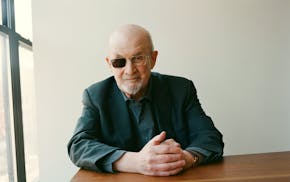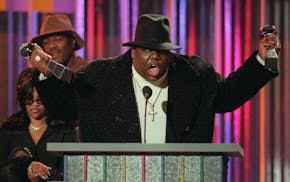At a recent Sunday mass at St. Edward Catholic Church in Bloomington, a woman stepped to the lectern on the altar -- and started to preach.
Before long, the vicar general of the archdiocese was paying a call to St. Edward's pastor, the Rev. Mike Tegeder, and reminding him that the rules of Vatican II have changed. Lay people, even someone with a master's degree in theology from St. Paul Seminary like this woman, can't give homilies anymore. That job can be done only by priests.
"She probably is more competent than most priests when it comes to putting together a good message," Tegeder said. "She has basically the same training as a priest."
As many parishes in the country -- including in the Twin Cities -- struggle with a growing shortage of priests, the St. Edward's incident points up tensions over the appropriate place for parishioners since the Vatican started limiting what roles they can play.
The archdiocese says it's abiding by a Vatican policy change that began in 2004, though church leaders here didn't actually try to enforce it until 2008, just before Archbishop John Nienstedt's arrival.
After the Jan. 23 service at St. Edward's, Tegeder said a parishioner notified the archdiocese that Heidi Busse preached the homily, the part of the mass when priests or deacons typically reflect on the Gospel and scripture. Busse is in charge of adult faith education at St. Edward's and was preaching about the subject, Tegeder said. Busse could not be reached for comment on Wednesday.
Tegeder said that the Rev. Peter Laird, the archdiocese vicar general, told him that lay people could only preach after communion, near the end of mass.
"The purpose of the homily at the mass is to interpret the gospel," said archdiocese spokesman Dennis McGrath. "Normally a priest is far more qualified to deliver that message. A priest is ordained to preach. Also, there's an opportunity there for wrong teaching or misinterpretation [with lay preachers]."
Tegeder said Busse is scheduled to preach at an April 11 Lenten penance service at St. Edward's, which is not a mass. He'd also like her to preach at a mass celebrating Mother's Day in May. He said he's not sure yet if he'll ask her to preach during the homily or after communion.
20 parishes had lay preachers
The Catholic Church began to embrace lay preaching following the Second Vatican Council in the 1960s.
In 1991, Patricia Hughes Baumer and her husband, Fred, were asked to form a training program at their church, Pax Christi in Eden Prairie. Since then, their Partners in Preaching has trained hundreds of lay Catholic preachers in Minnesota and other states.
Baumer estimates at least 20 parishes in the archdiocese at one time had lay preachers. Many had backgrounds in theology or similar fields, she said.
That ended after the Twin Cities archbishop at the time, the Rev. Harry Flynn, sent a letter dated Jan. 5, 2008, asking "those parishes who use lay preachers at mass to develop a pastoral plan to end the practice by the time of my retirement in May."
"It really deprived the people ... of an enormous gift," Baumer said. "They had the opportunity to hear the gospel preached with diverse voices by gifted people. The people doing lay preaching were called by their parish communities to use that gift, to preach. And they were well-received."
Concern for 'priestly identity'
Zeni Fox, a pastoral theology professor at Seton Hall University in New Jersey who has written extensively about Catholic laity, said lay participation is crucial with the shortage of priests and can have a real impact on a church's existence.
She said lay preaching has never been widespread and is even less so now. It was often used by priests to highlight the talents of female laity.
"I think what began to happen, in the last 15 years or so, there's been this growing concern about priestly identity," Fox said. "It's coming from the standpoint of who is a priest, what can a priest do and who is a lay person and what can they do?"
So why did it take the archdiocese four years to begin enforcing the 2004 Vatican policy change?
Tegeder said he believes the new archbishop had a hand in ending lay preaching. Archdiocese spokesman McGrath said Flynn's letter had nothing to do with Nienstedt, whose adherence to orthodox church doctrine has engendered fierce criticism from Tegeder and many Catholic lay people.
"We're a 2,000-year-old institution and sometimes things move kind of slowly," McGrath said. "I don't know what the pattern was in other archdioceses and dioceses. It just takes a while sometimes to implement changes."
Rose French 612-673-4352

Salman Rushdie's 'Knife' is unflinching about his brutal stabbing and uncanny in its vital spirit

